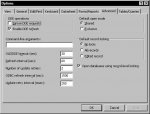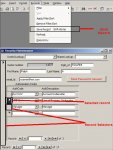I'm having some trouble getting a small database up and running in a multi-user environment. I've read many of the posts here about setting up a fe and be, but this seems to make sense to me only if a lot of folks will be using the database. We will have, at the most, 4 people working on this database at the same - usually no more than 2. So, i've put the database in centralized location on a shared network drive and set the permissions in Access under Tools | Options | Advanced on each of the computers so that "shared" is the default open mode, "edited record" is the default record locking and open database using record-level locking is checked. I've tried variations of this, but nothing has worked (and this one seems to make the most sense to me). What happens is when the the database is open in two places and one person tried to put in some data in a form and save, the error msg "You do not have exclusive access to the database at this time. Your design changes will not be saved." Strangely enough the data actually seems to get saved, but the error msg is making folks nervous. Any ideas??? Thanks for your help...lee
Multiple Users Issue
- Thread starter leerlap
- Start date


